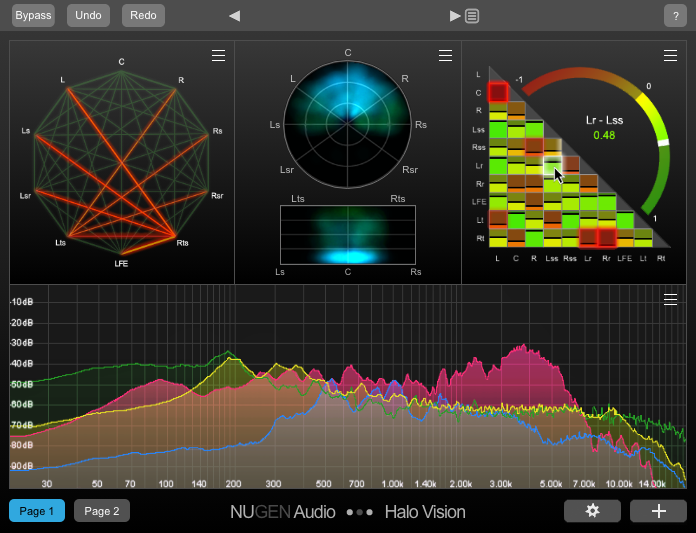Nugen To Show SigMod, Paragon Updates, Halo Vision Audio Analysis Suite At IBC 2022
Halo Vision offers real-time visual analysis of up to 7.1.2 channels for AAX, VST3 and AU

LEEDS, U.K.—Nugen Audio will showcase its Halo Vision audio analysis suite, Paragon convolution reverb and the latest updates for its SigMod plug-in at IBC 2022, Sept. 9-12, at the RAI Amsterdam Convention Centre.
Designed for 3D, surround and immersive audio workflows, the Halo Vision real-time visual analysis suite operates in up to 7.1.2 channels for the AAX, VST3 and AU formats. The solution offers a variety of modules that provides audio professionals with a clearer understanding of every aspect of their sound, the company said.
Tools for Halo Vision include a Correlation Matrix, Correlation Web and Spectrum and expanded versions of the company’s Haze and Location Haze functions as well as a True Peak meter for each channel, it said.
The modules support the decision making and troubleshooting duties of mix engineers who might otherwise miss a necessary adjustment using their ears alone. The solution can be customized, rearranged and resized for any specific workflow, it said.
The Correlation Matrix displays color-coded phase relationships between every channel. It features a larger arched meter for more detailed analysis and anti-correlation alerts at a user-defined threshold.
The Correlation Web module shows a network of channels with an interconnecting line between each pair. When the phase relationship between two channels becomes anti-correlated, the corresponding interconnected line lights up to alert the mix engineer.
The circular Frequency Haze displaying low frequencies at center and high frequencies on the outer edge shows frequency content across the surround field with channel labels in typical speaker positions.
The professional video industry's #1 source for news, trends and product and tech information. Sign up below.
The Location Haze tool visualizes the perceived location of audio and shows energy distribution across the surround field. Brighter sections indicated increases in strength. The combined Spectrum mode displays a level-against-frequency graph for all channels in one spectrum. The groups mode groups channels into separate overlay spectrums. The True Peak Meter provides a dBTP level meter for each channel.
The company’s updates to its SigMod plug-in include mono and split mono modes as well as a new Split module that allows users to switch between stereo and split-mono formats, giving them added flexibility with the signal architecture, it said.
The SigMod software offers custom, simple signal architecture with 13 single-process modules to enhance plug-in and DAW functionality. Users can easily insert, swap and move modules to fit to the correction conversion and tweaking of audio. Split, Mid/Side, Protect, Tap, Crossover, Insert, Mute/Solo, Trim, Switch, DC Off-Set, Mono, Phase and Delay modules are available, the company said.
The software is available in AAX, VST3, AU and AudioSuite formats in 64-bit for both Mac and Windows OS.
The Nugen Audio Paragon 3D-compatible convolution reverb offers full control of decay, room size and brightness via a state-of-the-art r-synthesis modelled on 3D recordings of real spaces. The tool gives broadcast professionals a high degree of tweak-ability with zero time stretching to eliminate artifacts, it said.
Paragon uses technology developed alongside the University of York’s Dr. Jez Wells. It features spectral analysis and precise EQ of the Impulse Responses (IR), which are analyzed, decomposed and re-synthesized to create new authentic spaces, it said.
Most recently, Nugen released Paragon ST, a mono/stereo-only version of the software and with it, updates to Paragon surround. Among the updates are new stereo width controls, new mic distance controls and a modulation function offering added creativity and a dynamic character to the reverb.
See Nugen Audio at IBC 2022 Stand 7.P11.
More information is available on the company’s website.
Phil Kurz is a contributing editor to TV Tech. He has written about TV and video technology for more than 30 years and served as editor of three leading industry magazines. He earned a Bachelor of Journalism and a Master’s Degree in Journalism from the University of Missouri-Columbia School of Journalism.

